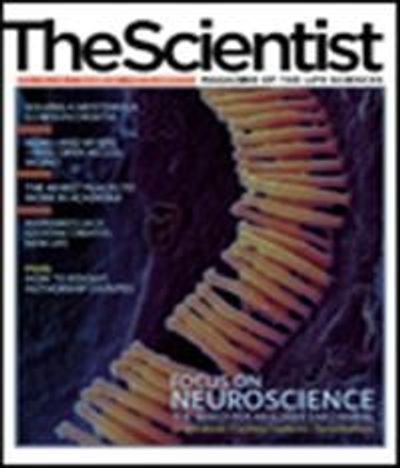After giving a lecture in Windsor, England last February, neuroscientist Bradley Duchaine was approached by a man who'd been in the audience. He told Duchaine, professor at the Institute of Cognitive Neuroscience, University College London, that he sometimes had trouble recognizing faces, even those of people he knew. Duchaine brought him to his lab, ran some tests, and diagnosed him with prosopagnosia, characterized as an inability to recognize familiar faces. "He was certainly atrocious" at recognizing faces, says Duchaine. When given face-memory tests and shown a battery of celebrity photos, "most people get about 80% correct. This [person] scored about 40%." He was British, but "he wasn't recognizing...
The concept that certain regions of the brain specialize in face processing was suggested in the late 1960s by Jerry Lettvin, who coined the term "grandmother cell" while a professor at the Massachusetts Institute of Technology. Early experiments in monkeys showed that specific neurons responded only to hands and faces. Over time, researchers narrowed the regions involved to three areas in the temporal and occipital lobes: specifically, the fusiform face area, occipital face area, and superior temporal sulcus.

The idea that specific brain regions handle facial recognition remained controversial until a year ago, when Doris Tsao from Harvard University and colleagues found neuronal activity that was exclusively triggered by face perception. By inserting miniscule electrodes into these specific regions of the macaque brain, Tsao saw a specific millivoltage produced by neurons in the face regions of the brain that did not occur when the monkeys looked at other objects (Science, 311:670-4, 2006).
Duchaine's fMRI scans show, too, that the three brain regions light up when the patient is looking at pictures of faces. When prosopagnosics see a familiar face, they show the same brain activity in these key areas as when they saw the face for the first time. Nonprosopagnosics, however, show less regional activity when looking at a familiar face, suggesting their brains don't need to work as hard.
So if face recognition is localized to three brain regions, what neurologic changes are behind prosopagnosia? There are some early clues. Cibu Thomas, in collaboration with Marlene Behrmann at Carnegie Mellon University, recently correlated prosopagnosic symptoms with a disruption of the connections between the brain regions involved in face processing. This work, still unpublished, indicates that face-blindness stems from problems in these neuronal networks, and not an impairment within one region or another in the brain. This would also explain why some people with prosopagnosia can have a structurally intact fusiform face area (previously thought to be the only area for face processing) and yet still present with symptoms.
"It turns out there's not just one region but a system of regions [processing faces in some way] - six different patches in the monkey brain," says Tsao. "We're trying to understand what each of them is doing at the level of single cells; one is highly specialized for processing which way someone is looking; another [is] strongly implicated in object recognition." There are many important reasons for face specialization. "We spend an awful lot of time extracting information from faces," says Duchaine. There's "an awful lot of information about who somebody is, what they're looking at, how attractive they are, and there's a measure of debate over how these face processes disassociate" in the brain.
Interested in reading more?




